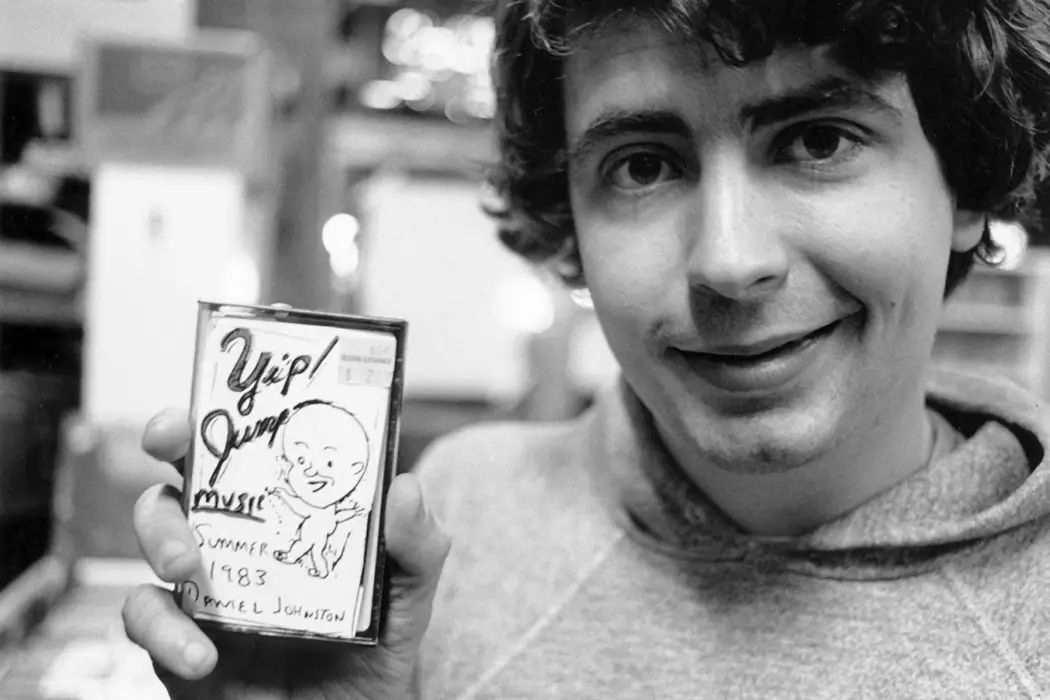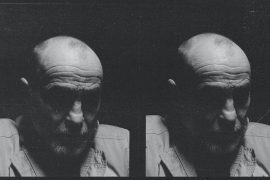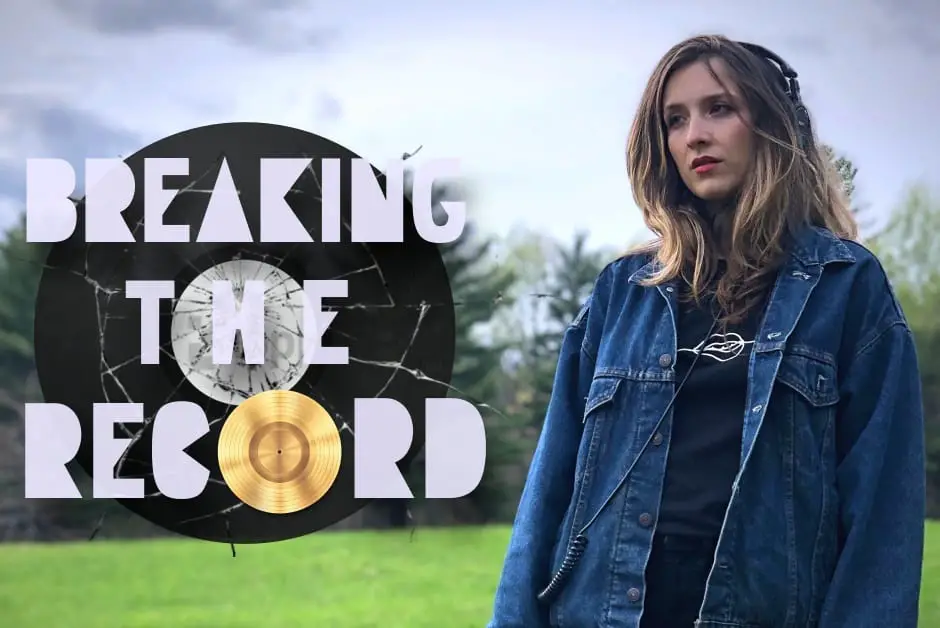Atwood Magazine celebrates and reflects upon the legacy of Daniel Johnston, whose passing has illuminated a desperate wanting in our technology-driven musical post-apocalypse, for something human.
by guest writer Matthew Gose
— —
The current musical landscape is one of extremes. On the industry side of things, we see an increasing movement away from originality, sincerity, and spirit and towards banal homogeneity. While the industry obsession with trends and return on investment is nothing new, the shifting music marketplace combined with access to user-friendly audio technology has in effect eviscerated the diversity that once prevailed. The outsiders of the SoundCloud era who do adhere to their artistic principles are often allocated to the farthest fringes of internet obscurity, impacting perhaps a small sphere of ardent followers, but missing the larger cultural potential that the industry once afforded such artists.
It’s hard to imagine that less than three decades ago, a figure like Kurt Cobain could be crowned de facto king of pop, or that a cable tv conglomerate like MTV would travel to a once-unknown Austin, Texas in search of those artistic gems dwelling in the fringes. One such gem was an odd young teenager named Daniel Johnston who was, in the late 80s and early 90s, a darling of the budding Austin indie music scene.
Over the last thirty years, Johnston would experience various crests and crashes in his musical odyssey. His passing, however, has illuminated a desperate wanting in our technology-drive musical post-apocalypse, for something human. His unconventional pre-YouTube rise to fame is indicative of a bygone era where authenticity and substance contended with, and occasionally won over marketability. Today’s pop culture landscape, while riddled with numerous pathways to fame, feels to favor acceptance over originality, and security over fearlessness.
While Johnston could hardly be considered mainstream, his presence and influence are far reaching. That his passing garnered any media attention at all- on a newsworthy day like 9/11 no less- is noteworthy in that it reveals the still smoldering embers of a once raging bonfire for art possessing merit beyond its commercial. In a creative pool overwrought with pristinely polished idols, voices pitched to algorithmic perfection, safe, sanitized, and sterilized lyrics, and most of all, utter emptiness- Johnston was and will forever be a welcome and necessary counterpoint. His quiet, twisted, clinically sincere and obscure melodic soundscapes, in all their malformed, lo-fi beauty, will eternally stand as the vital antithesis to mainstream pop commodification.

Reports of Daniel Johnston’s passing surfaced on September 11th. He was 58 years old. Johnston’s career and legacy are summed up neatly in one word: difficult. As a man living with bipolar schizophrenia, Johnston was prone to delusions, severe depression, and at times lurid aggression. The hull of his career was often left cracked by these episodes, ever on the verge capsizing. Like many before him, Johnston walked that razor’s edge between genius and insanity, often gravitating toward the latter. However, the sheer potency of Johnston’s music, paired with his unruly determination to share that music with the world, ultimately carved out for him a nifty little hideaway in the world of underground indie music.
Though Johnston could hardly be considered a household name, his status as an icon has been firmly established among the college radio, alternative rock, and indie pop worlds both in the States and overseas, as well some of indie music’s most noteworthy figures. Johnston’s legacy will eternally dwell within his tremendous body of warbled musical treasures- a hero for the outsiders who commit to their craft at all costs. Moreover, Johnston’s unique adherence to sincerity embody something even more indispensable, especially in context of the current musical landscape, and that is the incomprehensible triumph of the artist’s spirit.
A word like “genius” is so over utilized that it has reached a level of semantic satiation. Deciding whether Johnston, or anyone for that matter, truly fits the term doesn’t seem to be very useful. More productive, perhaps, especially in discussing an artist like Johnston, might be to examine the impact of his music and to wrestle with the question of why his music is seems so vital. At first listen, it’s understandably difficult to see the appeal of what, on the surface, appears to be nothing more than a collection of garbled, hissing, clanging noise from a whiney loser living in his parents’ basement. Appreciating Johnston’s music is a discipline not unlike unearthing musical gold in the old blues and folk recordings of artists like Robert Johnson and Woody Guthrie. Seeing and feeling the brilliance requires wading into the muck. As Ken Lieck, music critic for The Austin Chronicle, so perfectly articulates in Jeff Feuerzeig’s 2005 documentary The Devil and Daniel Johnston, as one falls deeper into Johnston’s catalogue, “Your mind will turn around to his. You start off hearing this noise. Then eventually you hear The Beatles. You hear the whole symphony.”
His songs were often pockmarked with atonal missteps, voice cracks, and fluctuating tempos. the majority of Johnston’s catalogue was self-recorded, not in some cutting-edge home studio outfitted with midi triggers and Apple products, but on a cheap boombox. Furthermore, each record contained a slew of random noises- including guerrilla recordings of his mother berating him- as well as more than a few tracks that are so unrefined that they become virtually inaccessible. In absence of technical skill and the miracle of modern audio recording technology, what ultimately arrives into the listener’s mind and heart is the soft, still whisper of Johnston’s devastatingly unbridled passion and ferocious sincerity.
Listen: “Man Obsessed” – Daniel Johnston
Still, it would be easy and possibly forgivable to write Johnston’s music off as pure novelty. After all, Johnston was discovered at the peak of the alternative movement where labels were scouring the earth for bizarre musical oddities in desperate hope of stumbling upon the next Nirvana. And while many of Johnston’s songs are so obscure as to be nearly unlistenable, every release contained at least a handful of truly remarkable expressions. One of his earliest tracks, “Man Obsessed,” from the album The What of Whom, is a darkly comedic inversion of 60s beat era pop. On it, Johnston plunking away at his piano and yelps on about the song’s semi-autobiographical protagonist with a cheeky snarl reminiscent of Elvis Costello or a young John Lennon. In fact, many of Johnston’s early works build upon a strong melodic and harmonic foundation laid by The Beatles, who served as Johnston’s primary influence. Another prime example is “Speeding Motorcycle,” off one of Johnston’s most loved collections Yip/ Jump Music, a raucous, driving embodiment of teenage angst featuring Johnston slapping out the chord progression of “Louie, Louie” on his electric keyboard.
Beyond merely repainting primitive Mercy Beat structures, some of Johnston’s most impactful songs display his deeper, sophisticated sensibilities regarding chord progressions and melodic structures. “Favorite Darling Girl,” off 1999’s Rejected Unknown, featuring a bouncing, jazzy, descending progression and a buzzing guitar melody, presents a modern recapitulation of prohibition-era standards. The opening track on 1990, the first of two Mark Kramer produced albums, titled “Devil Town,” is a haunting, a cappella melody illustrating the fear and loneliness he experienced as a result of his illnesses. The emptiness of the track severs as an invitation for the listener to enter Johnston’s own psyche. One key component of many of Johnston’s songs is the dramatic tension between the melody- which is almost always in a major key and thus evoking positivity- paired with lyrics full of dark imagery and bleeding emotion.
This dichotomy that Johnston seemed to create effortlessly, almost unintentionally, is perhaps the key ingredient to his appeal. Johnston was the embodiment of a tragic yet ever optimistic folk hero- who sang a positive melody despite the horrific darkness that seemed to consume him inwardly as well as outwardly.
Listen: “Favorite Darling Girl” – Daniel Johnston
While his capacity to produce a well-crafted melody alone would qualify Johnston to occupy a space in the great Western songbook, along side the likes of Dylan, Neil Young, John Lennon, guileless, aching, lyrics elevated his songs into a higher echelon of avant-garde verité. His lyrics dealt with familiar themes, unrequited romantic obsessions, childhood fantasies, expressions of heart ache and loneliness. What sets is lyrics apart is the complete absence of artifice in his writing. His songs often feature a main protagonist who behaves as his stand in for the many adventures and conquests, all of which seem to be lived out metaphors for Johnston’s daily battles.
Some of his lyrics forgo the metaphors all together and are just pure, frighteningly intense expressions of abject anguish. “Peek a Boo,” a naked piano ballad from The What of Whom, serves as one of Johnston’s most articulate expressions of the complete isolation he experienced as a result of his illness. While most teenagers and young adults experience a degree of social anxiety and awkwardness, for Johnston, these things were deeply internalized and largely inescapable. Not the result of a transitional season that he would “grow out of,” but a permanent state of begin that would dwell with him internally throughout his life.
On the final verse of “Peek a Boo,” calls out the listener, claiming “You can listen to these songs, have a good time, and walk away.” He continues with what is possibly the most heartbreaking lyric every written,” But for me its not that easy. I have to live these songs forever.” The song ends with the refrain, a guttural plea for love and understanding “Please hear my cry for help and save me from myself.”
His songs are filled with imagination and actual human emotion, at times to a discomforting degree. But when one truly becomes immersed in the lyrics and the melodies, the images, the emotions, the result is an unshakeable, transformative experience. Wayne Coi, frontman for The Flaming Lips, made this comment in an interview with The Austin Chronicle, “There’s definitely some absolutely pure, emotional thing that happens in his songs. It really is a man crumbling and crying right in front of you. Any musician that hears that, you’re shaken to the core…” Coin continued to speak on one of Johnston’s most well-known songs, “True Love Will Find You in the End.” “[The song] seems like just a hokey little song, but when he does it, it really is devastating. When making music, part of you wants to be a childlike character that isn’t thinking about, “Is this cool?” or “Is this going to work?” With [Johnston], there’s elements of being pure, emotional, and real that are just uncanny.”
Johnston’s music touched a creative nerve in several musicians from his era and beyond. The list of indie music celebrities impacted by Johnston includes heavy hitters like Kurt Cobain, Tom Waits, Glen Hansard, The National, and Karen O, as well as more contemporary artists like Lana Del Rey and Max Miller. The latter two, after viewing the 2005 documentary, even co-produced a short film starring Johnston himself. In his final years, Johnston finally began to get a true taste for the fame and acceptance he had so desperately thirsted for nearly three decades.
One of his most recent endeavors was to help create the Hi, How Are You Project, as well a music festival of the same title. The goal of the project, according to their website, is to inspire “new conversations around mental health issues by funding and creating thoughtful media content, projects and events.” Furthermore, in recent years, Daniel’s music began to bleed into the more mainstream wing of the indie underground. Apple feature the song “The Story of an Artist,” in a 2018 Mac Book commercial, subsequently becoming one of the most Shazam’d advertisements of the year. All this seems to indicate what true fans already knew, that Johnston’s music seems to hit on something deeply fundamental in the human spirit that no amount of technology or costly production value or advertising revenue will ever come close to.
Johnston bravely carried his burden and channeled his torment into something beautiful from which we can all benefit. His boldness challenges us all to look past the outside, to dig down deep within, to take what we find there and hold it up into the light. When we share our truest selves, as Johnston so perfectly articulates, true love will find you in the end.
— —
Matt Gose loves stories, great songs, driving windows-down along the coastal highways of North County San Diego, and his incredible wife, Alexandra. In 2011, he graduated from Point Loma Nazarene University with a BA in Literature and currently works in San Diego County as a freelance writer and substitute teacher. When he’s not writing, he’s playing his guitar named sunny, reading, spending time outdoors, or otherwise on the lookout for adventure. His favorite author in Ken Kesey. His favorite song is “You Still Believe in Me,” by The Beach Boys. His favorite movie is Almost Famous (duh). And his favorite food is tacos de lengua. Catch him on Twitter @thegosewriter, Instagram @gosewriter, and on the web at www.gosewriter.com
:: Stream Daniel Johnston ::








